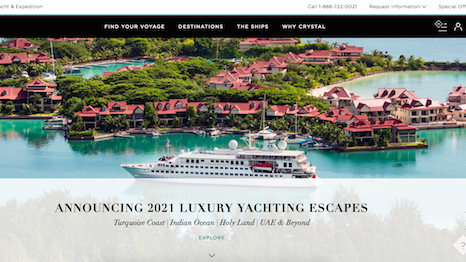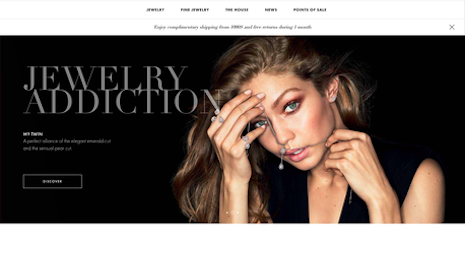 BMW updated its mobile site
BMW updated its mobile site
NEW YORK – Mobile applications offer a premier opportunity for brands to home in on their top-tier audience, but marketers might be forgetting the reach of the open Web.
The affluent landscape is changing, with previously less wealthy markets gaining greater prosperity and the dispersion of wealth drastically shifting. It is now harder than ever for luxury brands to find their audience, but in a keynote at Luxury FirstLook 2019 on Jan. 16, a Google executive stressed to luxury marketers that the open Web is how they can do that.
“The Web is growing,” said Adam Greenberg, global product partnership at Google. “It has always been growing, but growth doesn’t just mean more users.
“It means capability,” he said. “Performance and speed are critical, and are the most important things.
“Luxury has no problem creating things that look good, but it’s really about the experience.”
Luxury FirstLook 2019: Digital Acceleration was organized by Luxury Daily
Don’t forget the Web
Google estimates that there will likely be 5 billion devices connected to the open Web by next year.
With all this connection, many brands are focusing on their application experience and leaving their Web site experiences to the wayside.
Crystal Cruises' is one of many who have recently revealed a new Web site. Image credit: Crystal
The importance of keeping up performance online, outside of apps, was detailed by a recent BMW example in which the brand updated its site and immediately saw a 30 percent increase in click-through rate to national sales sites.
Google found that the official number for monthly app downloads is zero, meaning that consumers may download apps throughout the year but not on a consistent basis. This makes the open Web important in capturing users, whether through search, referrals or typing in a Web address.
However, the experience needs to be finely tuned.
For each second it takes for a page to load, there is a 7 percent decline in traffic. This is especially true for mobile.
While in the past, Web sites lacked the intense capability that apps offered, that is no longer the case. For instance, while previously Uber could not function on a Web site, its full capability is now available online in addition to its app to better serve every audience.
Brands need to take this advancement and make sure their sites are offering the best experience they can to cater to their audience.
Messika's launches new Web site powered by TrueFacet. Image credit: Messika
Through the use of accelerated mobile pages (AMP) and progressive Web apps (PWA), it is much more accessible to make an unparalleled experience for consumers online for all devices.
Traffic may be fuller on mobile, but brands and retailers cannot forget the desktop experience as well, as consumers often go to desktop for purchasing.
Mr. Greenberg also explained that the Story feature, often seen in apps such as Instagram and Snapchat, is on its way to the Web as well.
Additional insight
Catchpoint’s analysis of site performance (speed) in the luxury ecommerce sector highlights a clear recognition of the importance of Web-based sales and, by extension, superior Web performance to fuel these sales.
This includes holdouts in the so-called hard luxury sector of jewelry and watches, which, for a long time, viewed ecommerce as an after-the-fact consideration – after all, who buys a $10,000 watch without trying it on first (see story)?
China has also surpassed the United States as the leading source of watch Web site traffic, but a new study finds that luxury brands have not prepared.
According to Digital Luxury Group’s WorldWatchReport Benchmark, on watch manufacturers’ Web sites, load times in China are up to three times longer than those in the U.S. China is the leading market in digital platforms, making a significant impact in the watch sector as the U.S. sees a dip in site traffic (see story).
“Users want to have a good experience and if they don’t they will disappear,” Mr. Greenberg said. “It takes a half a second to get a first impression of a Web site.
“If it's not good, 90 percent will leave and not come back,” he said.

